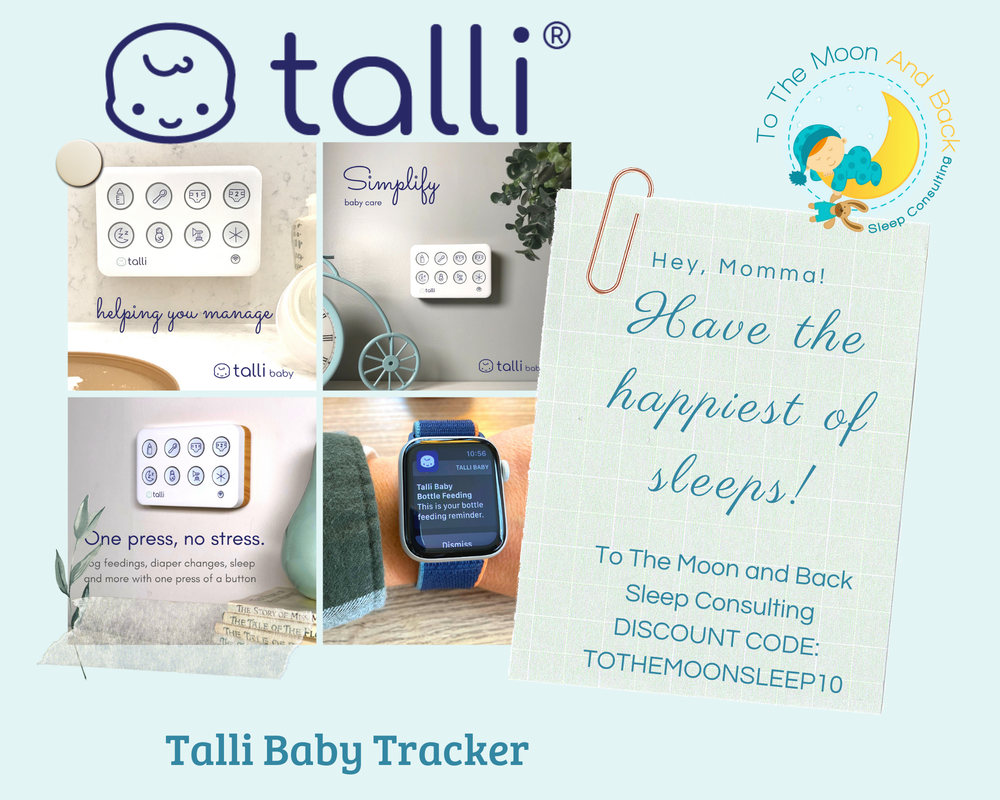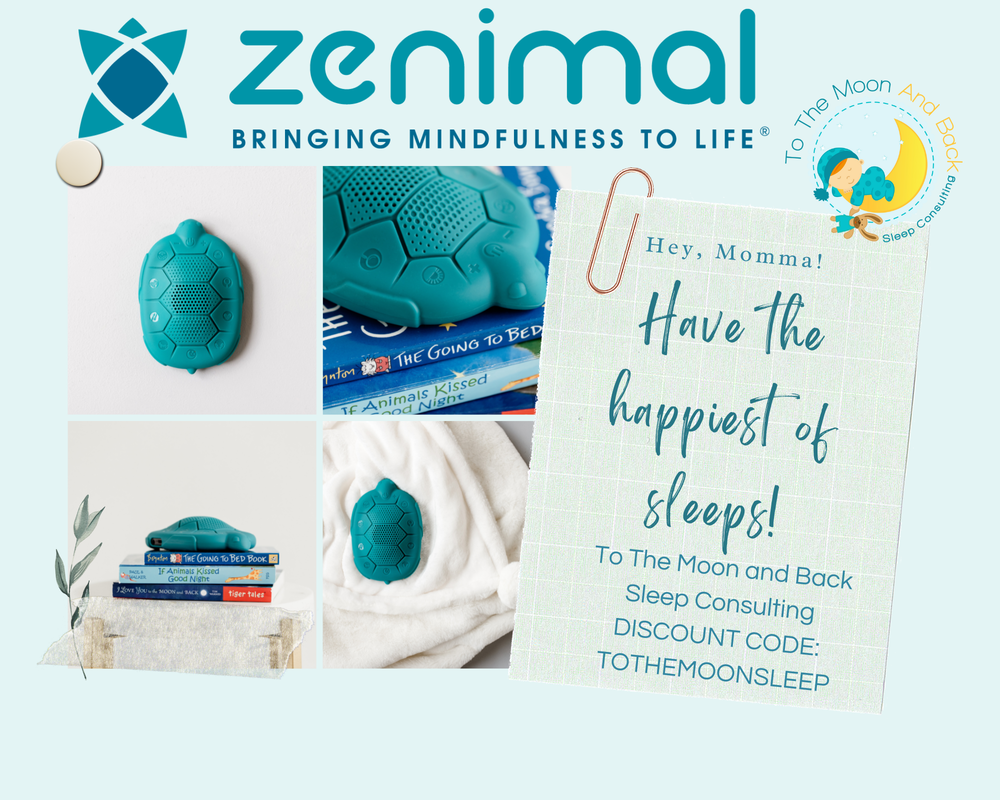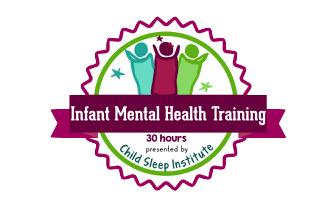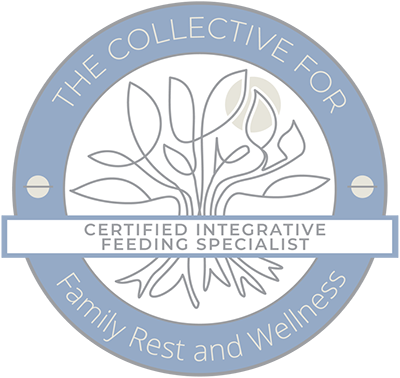|
Is your little one waking up in the middle of the night? No, no, not like that. I mean, like really waking up. Waking up and staying up. For, like… hours. If you’re the parent of a baby or toddler who’s dealing with segmented sleep, you know exactly what I’m talking about. This isn’t the middle of the night. “Go in and comfort your little sleeper for ten minutes until he gets back to sleep” wake up. This is a full-blown 3:00 a.m. dance party. It’s got a few names. Segmented sleep, bifurcated sleep, split nights, and it describes a situation where your little one sleeps for a long stretch, then wakes up happy and energetic in the middle of the night and stays that way for an hour or more. Slit Nights aren’t a new or unnatural phenomenon. Back before the widespread use of the electric light bulb, people would regularly sleep for a few hours, wake up for another hour or two, then go back to sleep. They’d use the time to read, smoke, pray, and have sex (not necessarily all at once), and then after an hour or two, they’d get back into bed and sleep until morning. (Apparently, it was also a typical time for visiting one’s neighbours. Not to hate on the old days, but if my neighbours came over unannounced at three in the morning, oooohhh, things would get biblical.) Nowadays, however, the vast majority of us go to sleep at night and, hopefully, close our eyes and sleep straight through until morning. But let me guess… your kiddo didn’t get the memo? Split nights are actually a pretty common issue. Baby goes down at 7:30 at night, wakes up at 3:00 in the morning, parties her ass off for an hour and a half, then goes back to sleep, apparently careless about the groggy, miserable day she’s set her parents up for. So let’s take a quick look at why this happens, and then we’ll learn how to solve the problem. Why Do Split Nights Happen? There are two major drivers when it comes to sleep. First, there’s our circadian rhythm, which is our natural tendency to fall asleep when it’s dark and wake up when it’s light. Then there’s our homeostatic sleep drive, commonly known as sleep pressure, which builds up over the time we’re awake. So ideally, over the course of the day, sleep pressure builds up, then at bedtime, when the pressure hits the sweet spot, baby puts her head down and goes to sleep. Then, as that sleep pressure begins to subside, circadian rhythm takes over, and baby stays asleep until morning. In the case of a split night, we could be looking at one of two reasons why they’re waking up. ● Your baby or toddler is not getting to bed early enough, OR… ● She is going to bed too early. Now before you pitch your phone out the window at that seemingly paradoxical explanation, check this out. How to Fix Split Nights? If your little sleeper is getting to bed too late, if too much sleep pressure has built up, the brain has this instinctive response that says, “Hey, you’re tired, but you’re not sleeping. I’m guessing that’s because there’s a carnivorous apex predator around, so we’d better get ready to make a break for it,” and then starts upping the cortisol levels. The brain means well, but it’s a little behind the times on our need for lion alerts. So this can make it tough for baby or toddler to get to sleep at bedtime since that cortisol’s got them a little bit jacked. It can also cause a full wake-up at the end of a sleep cycle, which commonly happens around 2 or 3 in the morning. Ugh. If this is the case, you’re one of the lucky ones. Treat this like any other nighttime wake-up, reassure baby that it’s still bedtime, comfort her and let her get back to sleep on her own, and consider moving bedtime up a bit over the course of a few nights. But then there’s the alternate scenario. What if your little sleeper gets to bed too early? In a situation where your baby or toddler’s getting lots of quality daytime sleep and going to bed early, it’s possible that there’s not enough sleep pressure built up to keep him sleeping until his circadian rhythm takes over and helps him sleep through the rest of the night, so up he gets. And now that there isn’t as much sleep pressure, and their circadian rhythm doesn’t have the horsepower to get them to sleep on their own, suddenly they’re up and active for an hour (or three!) while that pressure builds back up. Now, I’m all about early bedtimes. Too little sleep is a much bigger problem than too much. But suppose your baby or toddler's experiencing this kind of split-night sleep. In that case, it’s worth looking at their schedule and doing a little fine-tuning to ensure that you’re hitting the optimum sleep pressure right at the same time that baby’s going to bed for the night. I know plenty of situations can arise where you’ll want to get baby to bed a little early. For example, if she had a day of lousy naps and is clearly tired half an hour before bedtime, it’s the right move to get her to bed ahead of schedule. But try to avoid putting your little sleeper to bed early, more than one or two nights in a row. We want to prevent over-tiredness, but we also don’t want them in the crib at night for more time than they’re actually capable of sleeping. So if your baby or toddler's had a tough day and didn’t nap well, it’s fine to get her to bed a little early since that sleep pressure is likely already built up, but try to get her back onto the regular schedule starting the next morning, including her wake-up time. I know that this can all start to sound like an immaculately choreographed ballet. In some ways, it can be pretty complicated. Still, the more you understand the nuances and know where to make those minor adjustments, the better your baby or toddler will sleep. The less they’ll run into these regressions, setbacks, and interruptions. One final thing to consider if you’re getting ready to tackle this situation. This is not likely to be an overnight fix. Once your little one has gotten into this habit, getting them out of it can take some time. Like any attachment or dependency, overcoming it is an incremental process, and it’s likely to meet with some pushback, so if and when things get tough, remember your goal. You’re giving your little one the skills they need to sleep soundly through the night, and that contributes to their well-being in so many different ways. So stay consistent, be patient, and before too long, you and your little sleeper will both be enjoying full nights of deep, restful sleep. If you are having trouble with your child's schedule and are unsure what it should look like get our Free Sleep Needs Chart. It will help you determine wake windows, nap lengths, number of naps, bedtimes, along with wait times for night time interventions. AuthorErin Neri - Certified Pediatric Sleep Consultant and Owner of To The Moon and Back Sleep Consulting since 2016. Parenting a toddler can be a whirlwind of joy, laughter, and, sometimes, sleepless nights. If you’ve embarked on the journey of sleep training, you might be familiar with the term "extinction burst." It sounds daunting, but understanding and addressing it can be the key to a peaceful night’s sleep for both you and your little one. Let's dive into what an extinction burst is, why it happens, and how you can navigate through it successfully. What is an Extinction Burst? An extinction burst occurs when you first start to withdraw reinforcement from a behaviour—in this case, your toddler’s nighttime awakenings. Picture this: your toddler has gotten used to certain responses when they wake up at night, such as being picked up, rocked, or given a bottle. When you begin sleep training and stop these responses, your toddler might initially escalate their behaviour. This escalation is the extinction burst. Essentially, things get worse before they get better as your child tests the boundaries to see if their previous behaviour will eventually yield the desired response. Steps to Work Through the Extinction Burst
When to Seek Professional Help If you find that the extinction burst is lasting longer than expected, or if you're struggling to stay consistent and need additional support, don’t hesitate to seek help from a professional. A certified pediatric sleep consultant can offer personalized advice and strategies tailored to your child’s needs. They can also provide the emotional support you need during this challenging time. Final Thoughts Navigating through an extinction burst during sleep training can be exhausting, but it’s a vital step toward helping your toddler learn to self-soothe and sleep independently. By staying consistent, creating a comforting bedtime routine, and seeking help when necessary, you can guide your child through this phase and onto restful nights for the entire family. Remember, you’re not alone in this journey. Many parents have faced the same challenges and come out the other side with happier, well-rested children. Hold on to that thought, keep pushing through, and soon, peaceful nights will become the norm rather than the exception. If you need help through this stage of your sleep training journey I'd be more than happy to help. Book your Free 20-minute Sleep Evaluation Call today. I'll learn more about what's happening with your child's sleep, explain why and how I can help your family become a well rested one. AuthorErin Neri - Certified Pediatric Sleep Consultant and Owner of To The Moon and Back Sleep Consulting since 2016. Discover essential steps to support transitioning from co-sleeping to independent sleep and help them foster healthy sleep habits. Transitioning from co-sleeping to independent sleep represents a major developmental milestone for children and a significant adjustment for parents. Co-sleeping, while providing closeness and comfort in the early stages, can potentially impede a child’s ability to develop independent sleep habits. This comprehensive guide explores nine essential steps to navigate this transition effectively, fostering healthy sleep patterns and promoting independence for your child.
Understanding the Need for Change The first step in transitioning from co-sleeping to independent sleep involves recognizing the reasons for making this shift. Co-sleeping initially fosters a deep sense of security and closeness between parent and child. However, as children grow older, this arrangement can inadvertently create a dependence on parental presence for falling asleep. This dependency may hinder the development of crucial self-soothing skills, making it challenging for children to settle themselves back to sleep independently when they wake during the night. Breaking the nightly bottle habit is another important aspect of this transition, as it helps children learn to fall asleep without relying on external aids. Acknowledging these dynamics underscores the importance of encouraging children to gradually learn to sleep on their own, ultimately fostering greater self-confidence and independence. However, sometimes, life can take on unexpected changes, such as a sudden relocation due to a job or a changed living condition. In this case, transitioning from co-sleeping to independent sleep can be challenging for both parents and children. Yet, this transition can also present a unique opportunity to establish new routines and sleep patterns. When you move to a new home, creating a comfortable and inviting sleep environment for your child is essential, helping them feel secure in their new space. Furthermore, engaging in professional moving services, such as with professionalmoverottawa.com, can alleviate much of the stress associated with moving, allowing you to focus on setting up your child's new bedroom. Known for their attention to detail and reliability, they can ensure a seamless and stress-free moving experience, so you can concentrate on making the room familiar with your child's favorite toys, bedding, and a consistent bedtime routine, helping them adjust to independent sleep more smoothly. Establishing a Consistent Bedtime Routine Consistency is key in establishing healthy sleep patterns for children transitioning from co-sleeping to independent sleep. A structured bedtime routine signals to your child that it is time to unwind and prepare for sleep. This routine may include soothing activities such as a warm bath, reading bedtime stories, or engaging in calming conversations. By consistently following the same sequence of bedtime rituals each night, you help create a predictable environment that prepares your child mentally and physically for sleep. Over time, these routines become powerful cues that signal to your child’s body and mind that it is time to transition into restful sleep, facilitating a smoother transition away from co-sleeping. Creating a Comfortable Sleep Environment The sleep environment plays a crucial role in supporting a child’s transition to independent sleep. Several considerations are involved in designing a bedroom conducive to restful sleep. Ensure the room is comfortably cool, quiet, and dark, as these conditions promote optimal sleep quality. Choose a mattress and bedding that provide adequate support and comfort for your child. If your baby looks uncomfortable, adjust the sleep setup to meet their needs better. Personalizing the sleep space with familiar objects such as favorite blankets, stuffed animals, or soothing nightlights can further enhance feelings of security and relaxation. Creating a comfortable and inviting sleep environment helps your child associate their bedroom with feelings of safety and calmness, facilitating a more positive transition to independent sleep. Gradual Transition with Co-Sleeping Reduction Transitioning from co-sleeping to independent sleep is a gradual process that requires patience and persistence. Begin by gradually reducing the amount of time spent co-sleeping each night. This can be initiated by sitting next to your child’s bed until they fall asleep, moving progressively further away over time. This gradual withdrawal of parental presence allows your child to adjust to sleeping independently while feeling reassured by your gradual presence. Be prepared for some initial resistance or uncertainty from your child as they adapt to this new routine. Consistency and gentle encouragement are key during this phase, as they help build your child’s confidence in their ability to fall asleep and stay asleep on their own. Encouraging Self-Soothing Techniques Teaching your child self-soothing techniques is fundamental in supporting their transition to independent sleep. Self-soothing skills empower children to calm themselves when they wake during the night, promoting uninterrupted sleep and reducing dependency on parental intervention. Encourage practices such as deep breathing exercises, gentle rocking, or holding a comforting object like a favorite stuffed animal or blanket. By teaching these techniques, you equip your child with valuable tools to manage any anxieties or restlessness that may arise during the night, fostering a greater sense of independence and self-reliance in their sleep habits. Setting Clear Sleep Expectations Establishing clear sleep expectations is essential for a successful transition from co-sleeping to independent sleep. Communicate bedtime rules and routines to your child, emphasizing the importance of staying in bed until morning and engaging in quiet activities if they wake up before it is time to get up. Consistency in enforcing these expectations helps your child understand the boundaries and responsibilities associated with independent sleep. Additionally, discussing how these new routines will also apply during special occasions, such as sleepovers at the grandparents, can help reinforce these habits. By setting clear guidelines, you provide your child with a sense of structure and security, strengthening their understanding of what is expected of them during the transition process. Offering Positive Reinforcement and Rewards Positive reinforcement plays a pivotal role in motivating and reinforcing independent sleep habits in children. Acknowledge and praise your child for their efforts and progress toward sleeping independently. Consider introducing a reward system, like a sticker chart or creative badges, to celebrate milestones and achievements in their journey to independent sleep. These positive reinforcements encourage your child to embrace their newfound independence and foster a sense of accomplishment and self-esteem. Acknowledging their achievements instills confidence in your child's ability to manage and thrive in their evolving sleep routines. Addressing Setbacks and Challenges Anticipate and prepare for potential setbacks or challenges that may arise during the transition from co-sleeping to independent sleep. It is natural for your child to experience moments of resistance or difficulty adjusting to new sleep patterns. Be patient and empathetic when addressing these challenges, offering comfort and reassurance while gently encouraging your child to persist in practicing their newfound sleep skills. Maintain consistency in your approach and routines, as this consistency provides your child with a sense of stability and predictability during adjustment periods. By addressing setbacks with patience and understanding, you help your child navigate through obstacles and gradually build confidence in their ability to sleep. Embracing Independence: Transitioning from Co-Sleeping to Independent Sleep Transitioning from co-sleeping to independent sleep is a significant milestone in your child’s development. By implementing these nine essential steps—understanding the need for change, establishing a consistent bedtime routine, creating a comfortable sleep environment, gradually reducing co-sleeping, encouraging self-soothing techniques, setting clear sleep expectations, offering positive reinforcement, addressing setbacks, and seeking support—you can effectively support your child in developing healthy sleep habits and fostering independence. Through patience, consistency, and empathy, you can empower your child to embrace their journey toward independent sleep, laying the foundation for lifelong sleep skills and well-being. Photo via Pexels Ensure a smooth transition when moving from crib to bed with these practical tips. Learn how to prepare, establish routines, and encourage independence. Transitioning your child from a crib to a bed is a significant milestone. This change can be quite turbulent for both parents and children. To ensure a smooth transition, it's important to plan and prepare carefully. Here are some tips to make the process easier and less stressful for everyone involved.
Understanding the Right Time for the Move The right time for moving from crib to bed varies for each child. Generally, you should wait until as close to three years old as possible to ensure that your child is developmentally ready for this transition. Look for signs like your child attempting to climb out of the crib, showing interest in beds, or outgrowing the crib. These indicators can help you decide when it's time to make the switch. Preparing for the Transition Involve Your Child in the Process. Including your child in the preparation process can make them feel more comfortable and excited about the change. Let them help pick out their new bed, bedding, and even the decor for their room. This involvement gives them a sense of ownership and control, making the transition smoother. Create a Safe Sleeping Environment Make sure the new bed is safe for your child. Choose a bed with rails to prevent falls, and place the bed on a soft surface like a rug or carpet. Remove any hazards from the room, such as sharp objects, small toys, or cords. Additionally, consider using a nightlight to provide a sense of security during the night. Establishing a Consistent Routine A consistent bedtime routine is crucial when moving from crib to bed. This routine helps signal your child that it’s time to sleep and can make the transition smoother. Here are some steps to consider:
Dealing with Resistance and Setbacks It's normal for children to resist moving from crib to bed or to experience setbacks. Here are some tips to handle these challenges. Be Patient: Transitioning from a crib to a bed is a big change for your child. Be patient and understanding if they resist or take time to adjust. Offer comfort and reassurance to help them feel secure. Be Consistent: Consistency is crucial during this transition. Stick to the bedtime routine and the new sleeping arrangement. Avoid giving in to requests to sleep in the crib or your bed, as this can create confusion. Address Fears: Your child may experience nighttime fears during this transition. Use a nightlight, provide a favourite stuffed animal or blanket for comfort, and reassure your child that they are safe. Avoid introducing new fears by keeping the environment calm and secure. Additional Obstacles: While moving from crib to bed is a significant transition within the home, there are times when families may face larger moves, such as relocating to a new city or province. For those considering long distance moving in Alberta, hiring professional movers can make the process much easier. This can be especially important when transitioning from a crib to a bed, which is already a big change in your child's life. Hiring movers allows you to relocate with minimal effort, focusing your energy on helping your child adjust to their new environment and sleeping arrangements. Make sure you find Alberta professionals who are experienced in relocating families and understand the challenges of such periods. Encouraging Independence Moving from crib to bed is an opportunity to encourage independence in your child. Here are some ways to promote this. Allow Choices: Give your child choices related to their new bed and bedtime routine. Let them choose their pajamas, bedtime stories, or a stuffed animal to sleep with. These choices empower your child and make them feel more in control. Encourage Self-Soothing: Teach your child self-soothing techniques to help them fall asleep independently. This can include holding a favorite toy, using a nightlight, or listening to soft music. Gradually reduce your involvement in their bedtime routine to promote independence. Monitoring and Adjusting Once your child has transitioned to a bed, continue to monitor their sleep patterns and adjust as needed. Here are some tips for ongoing support. Observe Patterns: Pay attention to your child's sleep patterns and behaviours. If they have difficulty falling asleep or wake up frequently, consider adjusting the bedtime routine or environment. Make Adjustments: Be flexible and willing to make changes if needed. This might involve adjusting the bedtime schedule, changing the sleeping environment, or revisiting the bedtime routine. Seek Professional Advice If Needed: If your child continues to have difficulty adjusting or experiencing sleep issues, consider seeking advice from a sleep specialist. They can provide guidance and support to help your child develop healthy sleep habits. Celebrating the Milestone Transitioning from a crib to a bed is a significant milestone for your child. Celebrate this achievement to reinforce positive feelings about the change. Here are some ways to celebrate:
Good Luck Moving from Crib to Bed Moving from crib to bed is an important transition for both parents and children. By preparing in advance, establishing a consistent bedtime routine, and addressing any challenges with patience and understanding, you can ensure a smooth and successful transition. With these tips, you can make the move from crib to bed a positive and rewarding experience for your child. Photo via Pexels I get this question from moms all the time, so I thought I'd touch on it here. “My 10-month-old goes to bed with a bottle and wakes for a bottle in the night. How do I break her of this habit?” Good question! When you put your baby in bed at night, including the bottle in her routine is fine. You could start with a bath, pyjamas, her bottle, and a story or two. You really want to avoid giving her the bottle until she falls asleep or putting her in her crib with the bottle. You do not want your baby to fall asleep with a bottle in her mouth because if she wakes up in the middle of the night, she thinks she needs that bottle again to sleep. If you come with her bottle and feed her to sleep or put it into the crib, she sucks herself back to sleep with the bottle. Not only is that hard for her sleep strategies, but it is also very damaging to her teeth, which are coming in, so start the bottle earlier in your routine. You can have a bath, then her bottle, brush her teeth and then come back for some stories, but you should be putting her into the crib awake and without a bottle. If you follow gentle sleep training guidelines, I will give you some strategies to deal with the two weeks it will probably take to get her on track, learning a new strategy for getting herself to sleep. You don’t have to leave the room; you can stay with her if you like, but she really does need to start connecting the steps that are involved in putting herself to sleep independently so that she is not relying on that bottle! Otherwise, she will most likely keep waking for that bottle. It could go on well into the second year, so you really want to make sure you break this habit now. Then, when she wakes in the night requesting a bottle, you’ll have to decline that request. You can go in, you can stay with her and “ride it out,” basically, but she will learn a new way to sleep, and she will start sleeping a solid night, which will be better for her. It will be better for her in the sense that she is not falling asleep with the bottle in her mouth and, so, it may take about two weeks, but it is definitely for the best. If you are having trouble dropping your little sleepers nightly bottle habit and you want a tailored plan and support to help you teach them independent sleep skills and strategies book your Free 20-Minute Sleep Evaluation Call to learn more about how I can help change your life into one where everyone gets the sleep they need. AuthorErin Neri - Certified Pediatric Sleep Consultant and Owner of To The Moon and Back Sleep Consulting since 2016. As a parent, it's not uncommon to feel overwhelmed when it comes to your toddler's sleep habits. You may find yourself exhausted from trying to get them to fall asleep or stay asleep through the night.
This is where a Sleep Consultant like Erin at To the Moon and Back can help. Sleep consultants specialize in helping families create healthy sleep habits for their children, and here are some reasons why you should consider using one:
A Sleep Consultant can be a valuable resource for parents struggling with their toddler's sleep. They can provide a personalized sleep plan, professional expertise, consistency, ongoing support, and ultimately, help improve your child's sleep habits. If you're feeling overwhelmed or exhausted by your child's sleep habits, consider working with a sleep consultant to help create healthy sleep habits for your family. Book your Free 20-minute Sleep Evaluation Call to learn more about Erin's programs and how she can help change your family's life into one that sleeps well. Discover tips for establishing consistent nap routines to improve your toddler's sleep. Learn how to create a peaceful nap environment. Establishing consistent nap routines for your little ones can significantly enhance their overall health and development. A well-rested toddler shows marked improvements in mood and cognitive functioning, making naps a key part of their daily regimen. In this guide, we'll provide expert tips on setting a reliable nap schedule. Each step is designed to help parents craft a nap routine that adapts to their child's growing needs. We want to offer practical advice that you can start using today to improve your child's sleep patterns. Stay tuned as we explore how to make these quiet hours as beneficial as possible.
Decode Your Child’s Sleep Patterns Each child's sleep needs differ by age. Infants typically require 14-17 hours of sleep daily, while toddlers need about 11-14 hours. Recognizing these varying requirements is essential for setting appropriate nap schedules. To identify when your child needs rest, look for cues such as yawning, eye rubbing, and decreased activity. These signs suggest tiredness and the need for sleep. As children grow, their slumber needs evolve, necessitating adjustments to their sleep routines. An approach that soothes an infant might not suit a toddler, highlighting the importance of adapting strategies as your child develops. Understanding and responding to these changing needs are key to establishing a successful sleep routine. Observing your child's behavior and adjusting their sleep schedule will help them get the necessary rest to support their health and development. Thus, maintaining a flexible approach is crucial for fostering effective slumber patterns. Create a Conducive Sleep Environment Creating an ideal environment for your child’s daytime sleep can significantly improve their ability to fall and stay asleep. Below, we explore how to optimize sleep settings and the impact of maintaining a consistent slumber space. Optimize the Sleep Setting For starters, ensure the room is dark and quiet. You might use blackout curtains to block out daylight and a white noise machine to drown out household or street noise. These elements create a soothing atmosphere that signals it’s time for rest. Also, keep the room at a comfortable temperature—neither too hot nor too cold. Typically, a cooler room, around 68-72 degrees Fahrenheit, encourages better sleep. Maintain Consistency in Sleep Space Equally important is the consistency of where your child sleeps. Always using the same room and crib or bed for sleep periods reinforces to your child that this place is for resting. Introduce a sleep-friendly object, like a soft blanket or a special stuffed animal, only used during slumber times. This consistency in environment and cues simplifies the sleep process and helps with forming a reliable routine. Develop a Pre-nap Routine Consistent nap routines begin with crafting a calming pre-nap ritual. A routine signals to your child that slumber time is approaching. Start with dimming the lights and engaging in quiet activities. A favorite book or some soothing music can set a restful mood. These cues help toddlers anticipate that it's time to wind down. Next, consistency is key. Try to perform this routine at the same time and in the same order each day. This predictability makes children feel secure and helps ease them into slumber more readily. Keeping the pre-nap period relaxed aids in smoother transitions to sleep. Lastly, remain flexible within the framework of your routine. Minor adjustments will accommodate your child's evolving needs and occasional shifts in daily activities. This approach keeps the nap schedule flexible yet stable, promoting sustained restful periods for your child. Schedule Naps Setting up a nap schedule involves understanding both timing and consistency. Here are some steps to create a routine that supports your child’s natural sleep cycles and family life. Focus on Establishing Consistent Nap Routines For infants and toddlers, establishing consistent nap routines is crucial for daily harmony and developmental progress. Initially, observe your child to pinpoint the times they naturally grow sleepy. This observation aids in forming a schedule that aligns with their internal clock. Consistency in these nap times helps stabilize their overall sleep patterns, enhancing night rest and mood during wakeful hours. Balance Flexibility and Structure Next, balance this newfound schedule with the reality of daily activities. For instance, you might need to adjust nap times for family outings or special occasions. However, strive to keep these adjustments minimal. A flexible approach allows for life’s unpredictabilities while maintaining enough structure to give your child the rest they need. This balance is key to a routine that fits smoothly into your family’s lifestyle. Troubleshoot Common Naptime Challenges Adjusting to changing situations can pose several challenges for maintaining consistent nap times. Changes like travel, alterations in daily routines, or moving to a new home can disrupt a toddler’s sense of normalcy, making rest periods difficult. During these times, keeping some elements of their nap routine constant can provide comfort and stability. Specifically, moving introduces a new set of environmental stimuli that can unsettle young children. Prioritizing the setup of your child's sleeping area in your new home can recreate a familiar and soothing space, helping them adjust more smoothly. During this transition, maintaining the regular timing of naps can reinforce a sense of routine amidst the change. For families on the move, Allstate Moving and Storage can be an invaluable resource. This moving company’s efficient and careful handling of your relocation details allows you to focus more on your child’s needs during the move. Closing Lines In conclusion, several effective strategies exist for setting up consistent sleep schedules for our little ones. Establishing consistent nap routines can significantly enhance both their mood and overall development. However, patience and perseverance are key, as each child's needs might differ. Should challenges arise, addressing them swiftly and creatively ensures that sleep disruptions are merely temporary setbacks. Your dedication to these methods will nurture your child's sleep habits successfully. If you're having trouble with your little sleepers naps it's time to reach out for help. Get my Free Sleep Needs Chart to help schedule your kiddo's naps. See the main page and sign up for this free resource. Are you ready to work one-on-one with me to change your family's sleep? Book your Free 20-minute Sleep Evaluation Call and we will discuss how I can help you and your little sleeper get the sleep they require to be the happiest and healthiest versions of themselves possible. Photo via: Pexels  Once your baby reaches six months old, nighttime feedings often become less about nutritional necessity and more about comfort and habit. This is an ideal time to begin transitioning your baby’s calorie intake from night to day. Understanding the biology of how a baby’s body regulates calorie needs can help make this transition smoother and ensure that your baby continues to thrive. The Role of Caloric Intake in Baby’s Growth Biological Basis of Caloric Regulation Babies are excellent at self-regulating their calorie intake. Research shows that, much like adults, if they consume fewer calories at one point in the day, they tend to compensate by eating more at another time to meet their energy requirements. This innate ability is crucial as it helps maintain their growth and development trajectory. Caloric Needs and Development As infants grow, their energy needs per pound of body weight decrease, but the total amount of calories they need increases as they get larger and more active. By the time a baby is six months old, they are typically ready to start solid foods, which helps them meet their increasing nutritional demands. Transitioning Nighttime Calories to Daytime Step 1: Calories Missed at Night equal Calories Made Up During the Day When we begin to sleep train, it is often recommended that we reduce or eliminate all nighttime feedings. This will help ensure that the baby is not confused by the new expectations in the night and learns to sleep through without consuming calories. Eliminating nighttime feeds often concerns parents, but the reality is that the baby’s body will demand this calorie deficit to be made up the next day. Usually through more oz in a bottle, a more extended nursing session or more solid food at each meal. It’s not about pulling nighttime feed but more about reorganizing calorie intake. Step 2: Increase Daytime Feeding Opportunities Offer more frequent daily feedings to compensate for the reduced calorie intake at night. This can include more opportunities to breastfeed or bottle-feed and introducing nutrient-dense solid foods if your baby is ready for them. Step 3: Observe and Adapt Monitor your baby’s response to these changes. Look for signs of hunger and fullness, and be flexible in your feeding schedule. Babies may need time to adjust their hunger cues, so pay close attention to their needs. Step 4: Establish a Consistent Routine As your baby begins to adapt, establish a consistent daytime feeding routine. This helps set their internal clock to expect nourishment during the day rather than at night, aiding in better sleep patterns for both babies and parents. The Science Behind Calorie Shifting The concept of shifting calorie intake is backed by understanding that a baby’s metabolic rate is adaptable. During the first year of life, an infant’s metabolic rate is highly responsive. This adaptability ensures they can meet their energy needs through varying feeding patterns. As nighttime calories decrease, their body adjusts to absorb and utilize more nutrients during the day. This is why consistent daytime feeding becomes crucial in maintaining adequate growth and nutritional status. Ensuring Adequate Nutrition As you work on transitioning your baby’s feeding schedule, it’s essential to ensure they receive a balanced intake of nutrients. If you’re introducing solids, include a variety of foods to cover the nutritional spectrum, such as iron-rich foods, which are important at this stage of development. Conclusion Transitioning your baby from night to day feedings is not just about reducing nighttime interruptions — it’s about aligning their eating patterns with their natural developmental changes. By understanding the biological science behind calorie regulation and providing appropriate nutrition during the day, you can help facilitate this transition smoothly, ensuring your baby continues to receive the energy they need to grow healthy and strong. References:
AuthorErin Neri - Certified Pediatric Sleep Consultant and Owner of To The Moon and Back Sleep Consulting since 2016. Throughout the sleep training process, I'm often asked how to keep baby awake through their feeding during the bedtime routine. When you're working on sleep training, my number one rule is to keep your baby wide awake through any feeds. Nine times out of ten, the problem is that the bottle or breast has become a sleep prop. If you don't break the connection your baby has between the feed and sleep, the process will be so much more complicated. It can cause night wake-ups, and then when they wake up at night, they will still have the idea that they need a bottle or breast to get back to sleep at night. I suggest moving the feeding up in the bedtime routine. Most people have a feeding as the last step. That can be tricky, especially if they're not napping great yet. They could be tired by the time bedtime comes. By the time they've had a bath, and you've got jammies on, reading stories, and then you're going into a feed, they might be way too exhausted even to try to stay awake for the feed. Then you're fighting a battle of tickling and talking to them and trying to keep them awake, and they're so tired they really can't help you out. I suggest you move it up to before the bath. Have the feed, then the bath, jammies, stories, and then bed. That will help break any connection they have with the bottle related to sleep. If that feels a bit early in the routine, move it immediately after the bath. Sometimes, the tub stimulates children a little, so the feed can help calm them down. Most children really like their bath, so they'll be a bit more awake when you get to the feed. Then, you can move on to the next steps. The good news is that the better naps get, the less tired they'll be by bedtime, so that's something to look forward to. The more the separation between the bottle and sleep develops, the less likely they are to try to fall asleep at the bottle. You'll find that with time, even if they are exhausted, they won't use the feeding as a prop. There won't be a connection there anymore. Your baby will happily have their feed and then put themselves to sleep just fine when they get to the crib. AuthorErin Neri - Certified Pediatric Sleep Consultant and Owner of To The Moon and Back Sleep Consulting since 2016. |
To The Moon and Back Sleep ConsultingProviding families the tools & support they need to get their little ones sleeping through the night and napping like champs! Everyone has more fun when they are well rested! Visit Wollino - Discount Code: TOTHEMOONANDBACK10
Browse
All
|
All information provided on this website, including texts, images, and other materials, are for informational purposes only and should not be considered a replacement for assessment or treatment by a healthcare provider.
© COPYRIGHT 2016-2024 TO THE MOON AND BACK SLEEP CONSULTING. ALL RIGHTS RESERVED. WAKING GIRL WEB DESIGN
© COPYRIGHT 2016-2024 TO THE MOON AND BACK SLEEP CONSULTING. ALL RIGHTS RESERVED. WAKING GIRL WEB DESIGN









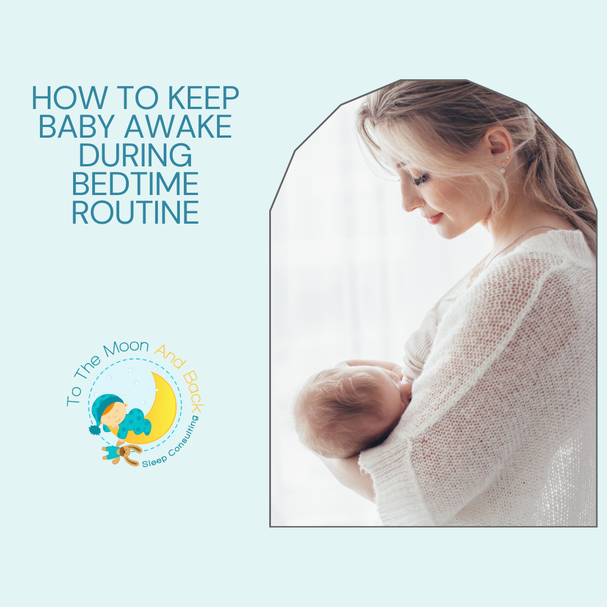

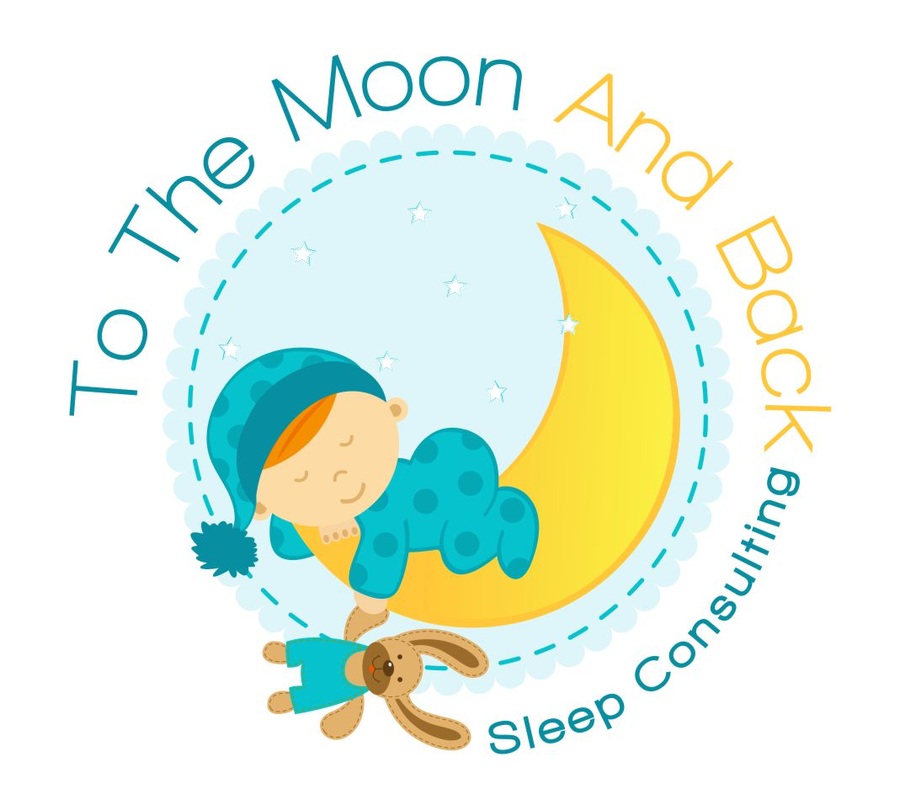




 RSS Feed
RSS Feed

